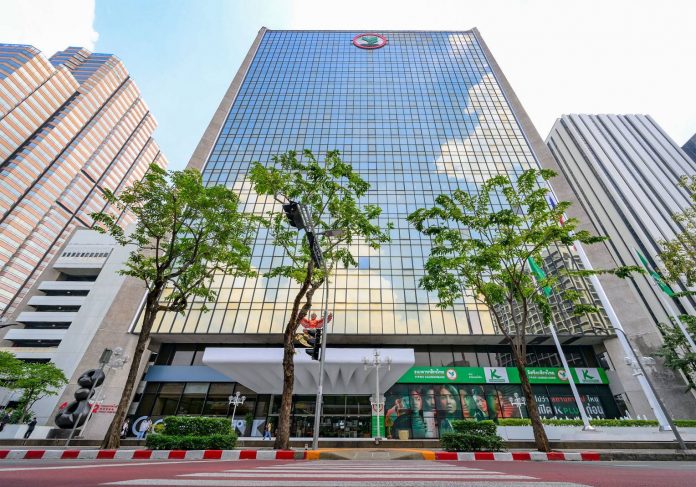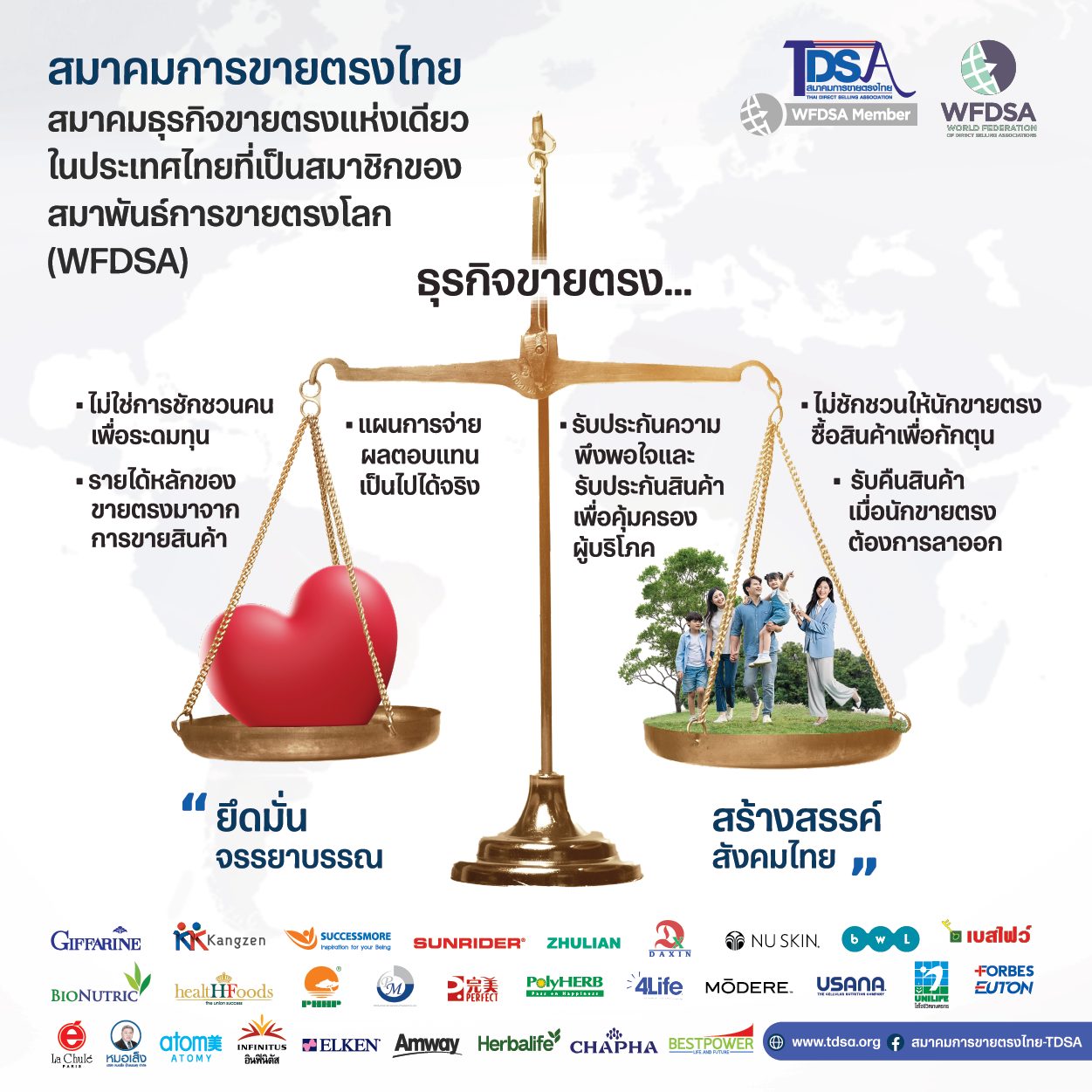
นางสาวขัตติยา อินทรวิชัย ประธานเจ้าหน้าที่บริหาร ธนาคารกสิกรไทย เปิดเผยว่า แม้ภาพรวมเศรษฐกิจไทยในปี 2565 จะสามารถประคองทิศทางการฟื้นตัวได้ดีกว่าปี 2564 แต่ภาคการส่งออกของไทยเริ่มได้รับผลกระทบจากสัญญาณชะลอตัวของเศรษฐกิจโลกที่ปรากฏขึ้นอย่างชัดเจนตั้งแต่ช่วงไตรมาสที่ 4 ปี 2565 และมีความเสี่ยงที่จะกลายเป็นภาวะเศรษฐกิจถดถอย ในปี 2566 เนื่องจากธนาคารกลางของประเทศแกนหลักของโลกยังคงต้องคุมเข้มนโยบายการเงินต่อเนื่องเพื่อสกัดแรงกดดันเงินเฟ้อ นอกจากนี้ แม้ว่าจีนจะเริ่มทยอยเปิดประเทศ แต่การฟื้นตัวของจำนวนนักท่องเที่ยวจีนอาจหนุนตลาดต่างชาติเที่ยวไทยได้เพียงในระดับหนึ่ง ทำให้การฟื้นตัวของภาคการท่องเที่ยวของไทยในปี 2566 จะยังไม่สามารถกลับเข้าสู่ระดับก่อนโควิด-19 ได้ ดังนั้น เส้นทางการฟื้นตัวของเศรษฐกิจไทยในปี 2566 ยังคงมีความเปราะบาง และยังคงต้องติดตามแรงกดดันในส่วนของต้นทุนการผลิต ค่าจ้างแรงงาน อัตราเงินเฟ้อ ปัญหาค่าครองชีพ และอัตราดอกเบี้ยในประเทศที่ยังขยับขึ้นต่อเนื่องด้วยเช่นกัน ธนาคารและบริษัทย่อยจึงยังคงดำเนินธุรกิจตามหลักความระมัดระวังรอบคอบภายใต้ทิศทางภาวะเศรษฐกิจที่ยังมีความไม่แน่นอน ในการเดินหน้าเชิงกลยุทธ์ด้วยการใช้เทคโนโลยี และกระบวนการใหม่ ๆ รวมทั้งการผนึกกำลังกับพันธมิตรทางธุรกิจ และการเป็นธนาคารยุคใหม่แห่งภูมิภาค AEC+3 อย่างต่อเนื่องในการขยายโอกาสการเข้าถึงบริการทางการเงินในระบบธนาคารพาณิชย์ให้กับประชาชนในวงกว้าง ให้ได้รับการสนับสนุนเงินทุนและสภาพคล่อง และใช้ประโยชน์จากผลิตภัณฑ์ และบริการต่าง ๆ ของธนาคาร ส่งเสริมให้ธุรกิจลูกค้าเติบโตอย่างต่อเนื่อง ตอบรับโอกาสทางธุรกิจที่จะเกิดขึ้น รวมทั้งธนาคารยังคงดำเนินการเชิงรุกในการดูแล และให้ความช่วยเหลืออย่างต่อเนื่องแก่ลูกค้าที่ได้รับผลกระทบจากภาวะเศรษฐกิจที่มีการฟื้นตัวไม่เท่ากันผ่านช่องทางต่าง ๆ ของธนาคาร
สำหรับปี 2565 ธนาคารและบริษัทย่อยมีกำไรสุทธิจำนวน 35,770 ล้านบาท ลดลงจากปีก่อนจำนวน 2,283 ล้านบาท หรือ 6.00% โดยกำไรจากการดำเนินงานก่อนหักผลขาดทุนด้านเครดิตที่คาดว่าจะเกิดขึ้นและภาษีเงินได้มีจำนวน 98,504 ล้านบาท เพิ่มขึ้น 6.72% เมื่อเทียบกับปีก่อน เป็นผลจากการดำเนินการตามยุทธศาสตร์ของธนาคารและทิศทางอัตราดอกเบี้ย ส่งผลให้รายได้ดอกเบี้ยสุทธิเติบโตอย่างแข็งแกร่ง และมีอัตราผลตอบแทนสินทรัพย์ที่ก่อให้เกิดรายได้สุทธิ (Net interest margin : NIM) ที่สูงขึ้นอยู่ในระดับ 3.33% ประกอบกับการบริหารจัดการค่าใช้จ่ายอย่างมีประสิทธิภาพทำให้อัตราส่วนค่าใช้จ่ายจากการดำเนินงานอื่น ๆ ต่อรายได้จากการดำเนินงานสุทธิ (Cost to income ratio) ดีขึ้นอยู่ที่ระดับ 43.15% อย่างไรก็ตาม ธนาคารและบริษัทย่อยพิจารณาตั้งสำรองผลขาดทุนด้านเครดิตที่คาดว่าจะเกิดขึ้น (Expected credit loss : ECL) เพิ่มขึ้นจากปีก่อนในระดับสูงเพื่อให้สอดคล้องกับหลักความระมัดระวังอย่างต่อเนื่อง และเหมาะสมกับสถานการณ์ทางเศรษฐกิจ
รายได้ดอกเบี้ยสุทธิเพิ่มขึ้นจำนวน 13,608 ล้านบาท หรือ 11.40% ส่วนใหญ่เป็นการเพิ่มขึ้นของรายได้ดอกเบี้ยเงินให้สินเชื่อตามการเติบโตของเงินให้สินเชื่อใหม่ในกลุ่มลูกค้าบุคคล และกลุ่มลูกค้าธุรกิจเอสเอ็มอี โดยเน้นการนำเสนอผลิตภัณฑ์สินเชื่อผ่านช่องทางดิจิทัลเพิ่มขึ้น ควบคู่กับการนำข้อมูลมาใช้วิเคราะห์ในการปล่อยสินเชื่อซึ่งเป็นไปตามยุทธศาสตร์ของธนาคาร ในขณะที่รายได้ที่มิใช่ดอกเบี้ยลดลงจำนวน 3,700 ล้านบาท หรือ 8.42% ส่วนใหญ่เกิดจากค่าธรรมเนียมรับจากการจัดการกองทุน ค่านายหน้าจากการซื้อขายหลักทรัพย์ และรายได้สุทธิจากการรับประกันภัยที่ลดลงซึ่งเป็นไปตามสภาวะตลาด
ค่าใช้จ่ายจากการดำเนินงานอื่น ๆ เพิ่มขึ้นจำนวน 3,709 ล้านบาท หรือ 5.22 % หลัก ๆ จากค่าใช้จ่ายทางการตลาดที่เพิ่มขึ้นสอดคล้องกับรายได้ที่เพิ่มขึ้นตามปริมาณธุรกิจ และค่าใช้จ่ายทางด้านเทคโนโลยีสารสนเทศเพื่อให้สามารถรองรับความต้องการของลูกค้า
ผลขาดทุนด้านเครดิตที่คาดว่าจะเกิดขึ้น (Expected credit loss : ECL) ในปี 2565 มีจำนวน 51,919 ล้านบาท เพิ่มขึ้นจากปีก่อน 28.73% เพื่อรองรับการชะลอตัวของเศรษฐกิจโลกที่มีความเสี่ยงที่จะกลายเป็นภาวะเศรษฐกิจถดถอยในอนาคต รวมทั้งการฟื้นตัวของภาวะเศรษฐกิจในประเทศไทยที่ยังคงเปราะบาง นอกจากนี้ ยังเป็นการเสริมความแข็งแกร่งและเพิ่มความยืดหยุ่นในการบริหารจัดการคุณภาพสินทรัพย์ให้มีความพร้อมในการดูแลช่วยเหลือลูกค้ากลุ่มต่าง ๆ ตามยุทธศาสตร์ของธนาคาร เพื่อให้ลูกค้าสามารถดำเนินธุรกิจได้เต็มศักยภาพ ตอบรับกับโอกาสทางธุรกิจที่จะเกิดขึ้น โดยอัตราส่วนค่าเผื่อผลขาดทุนด้านเครดิตที่คาดว่าจะเกิดขึ้น
ต่อเงินให้สินเชื่อด้อยคุณภาพ (Coverage ratio) ณ วันที่ 31 ธันวาคม 2565 อยู่ที่ระดับ 154.26% ซึ่งเป็นระดับที่เหมาะสมกับสถานการณ์ที่เกิดขึ้น ณ วันที่ 31 ธันวาคม 2565 ธนาคารและบริษัทย่อยมีสินทรัพย์รวมจำนวน 4,246,369 ล้านบาท เพิ่มขึ้นจากสิ้นปี 2564 จำนวน 142,970 ล้านบาท หรือ 3.48% หลัก ๆ เป็นการเติบโตของเงินให้สินเชื่อสุทธิตามยุทธศาสตร์ของธนาคารและสอดคล้องกับภาวะเศรษฐกิจ และการเพิ่มขึ้นของรายการระหว่างธนาคารและตลาดเงินสุทธิ นอกจากนี้ ธนาคารเพิ่มความเชี่ยวชาญในการบริหารจัดการสินทรัพย์ด้อยคุณภาพให้ดียิ่งขึ้น ซึ่งมีส่วนช่วยให้ลูกค้ามีสถานะทางการเงินที่ดีขึ้นสามารถประกอบธุรกิจได้อย่างต่อเนื่อง และจะเป็นกำลังขับเคลื่อนการฟื้นตัวของระบบเศรษฐกิจโดยรวม ทั้งนี้ เงินให้สินเชื่อด้อยคุณภาพต่อเงินให้สินเชื่อ (%NPL gross) อยู่ที่ระดับ 3.19% สำหรับอัตราส่วนเงินกองทุนทั้งสิ้นต่อสินทรัพย์เสี่ยงของกลุ่มธุรกิจทางการเงินธนาคารกสิกรไทยตามหลักเกณฑ์ Basel III ณ วันที่ 31 ธันวาคม 2565 ยังคงมีความแข็งแกร่งอยู่ที่ 18.81% โดยมีอัตราส่วนเงินกองทุนชั้นที่ 1 อยู่ที่ 16.84% ทั้งนี้ งบการเงินรวมของธนาคารและบริษัทย่อยสำหรับปีสิ้นสุดวันที่ 31 ธันวาคม 2565 ได้รวมฐานะการเงินและผลการดำเนินงานของธนาคารแมสเปี้ยน จากการเข้าไปลงทุนเพิ่มในช่วงปลายปีทำให้มีสัดส่วนการถือหุ้นรวมร้อยละ 67.50 ของหุ้นที่ออกและชำระแล้ว ซึ่งไม่มีผลกระทบต่องบการเงินรวมอย่างมีสาระสำคัญ

KASIKORNBANK announces 2022 net profit of Baht 35,770 Million
Ms. Kattiya Indaravijaya, Chief Executive Officer of KASIKORNBANK, said although the Thai economy in 2022 showed continuing improvement in comparison to 2021, the export sector was hurt by signs of a global economic slowdown with the potential to enter a recession in 2023, due to the continued tightening cycles of the major central banks to combat inflationary pressures. In addition, although China is reopening, the return of Chinese tourists may support the overall tourism sector to only a limited extent, and the sector may not fully recover to pre-COVID-19 levels this year. Therefore, Thailand’s economic recovery will likely remain on an uneven path in 2023 with potential negatives to be closely monitored, including pressures from rising production costs, wages, inflation, and costs of living, as well as higher domestic interest rates. KBank and its subsidiaries continue to conduct business with the prudence under the uncertain economic circumstance to make a strategic move through using new technology and processes including synergy with business partners and become the Regional Digital Bank of the new era in AEC+3 region continuously to boost access to financial services in the commercial banking system among a broader range of the public, that can help them to get capital and liquidity support and benefit from banking products and services to encourage continuous growth in customer business in order to align with the upcoming business opportunities. In addition, KBank still proactively embarked in take care of and continuously provide assistance to customers who have been affected by the uneven economic recovery through various channels of the Bank.
KBank and its subsidiaries reported net profit for the year 2022 of Baht 35,770 Million, a decrease of Baht 2,283 Million or 6.00% over the previous year. Operating profit before expected credit loss and income tax expense amounting to Baht 98,504 Million, an increase of 6.72% over the previous year. As a result of the Bank’s strategic and interest rate direction, net interest income grew strongly and NIM was higher that stood at 3.33%. Together with efficient expense management, the cost to income ratio stood at 43.15%. However, KBank and its subsidiaries set aside higher expected credit loss than the previous year, the increase could be attributed to our continuously adopted a prudent approach and to cope with uncertainties of economic circumstance.
Net interest income increased by Baht 13,608 Million or 11.40%, mainly due to an increase in interest income from loans to customers according to growth of new loan granted to retail and SME business customers with focus more on offering of loan products via digital channels along with the use of data analytics for lending, which is in line with the Bank’s strategic direction. While non – interest income decreased by Baht 3,700 Million or 8.42%, mainly due to a decrease in fees from fund management, brokerage fees and net premiums earned – net in line with market condition.
KBank Profit Q422 page 1 from 2
-2-
Other operating expenses increased by Baht 3,709 Million or 5.22%, mainly due to an increase in marketing expenses consistent with rising revenue which was in line with business volume, and an increase in IT related expenses to accommodate customer demand.
Expected credit loss for the year 2022 amounting to Baht 51,919 Million, an increase of 28.73% from the previous year to cope with a global economic slowdown with the potential to enter a recession in the future and Thailand’s economic recovery will likely remain on an uneven path. Moreover, it also strengthens and increases flexibility in asset quality management to ensure readiness to support groups of customers according to the Bank’s strategic direction, so that customers can operate their businesses with potential align with the upcoming business opportunities. Coverage ratio as of 31 December 2022 stood at 154.26% which was deemed appropriate with situation happened.
As of 31 December 2022, KBank and its subsidiaries’ total assets were Baht 4,246,369 Million, an increase of Baht 142,970 Million or 3.48% over the end of 2021. The majority came from net loan growth in line with the Bank’s strategic direction and in accordance with the economy and increase in interbank and money market items – net. Moreover, KBank has enhanced its expertise in the effectiveness of non-performing loans management. This is to support customers to have a better financial status and able to operate their businesses continuously, which will be driver for the overall economic recovery. NPL gross to total loans stood at 3.19%. In addition, as of 31 December 2022, KASIKORNBANK FINANCIAL CONGLOMERATE’s Capital Adequacy Ratio (CAR) according to the Basel III Accord was 18.81%, with
a Tier 1 Capital ratio of 16.84%. The consolidated financial statements of the Bank and its subsidiaries for the year ended 31 December 2022 include the financial position and operating performance of PT Bank Maspion Indonesia Tbk from holding interest of 67.50% of total issued and paid-up share capital. There is no significant impact on the consolidated financial statements from this additional investment at the end of the year.
































































